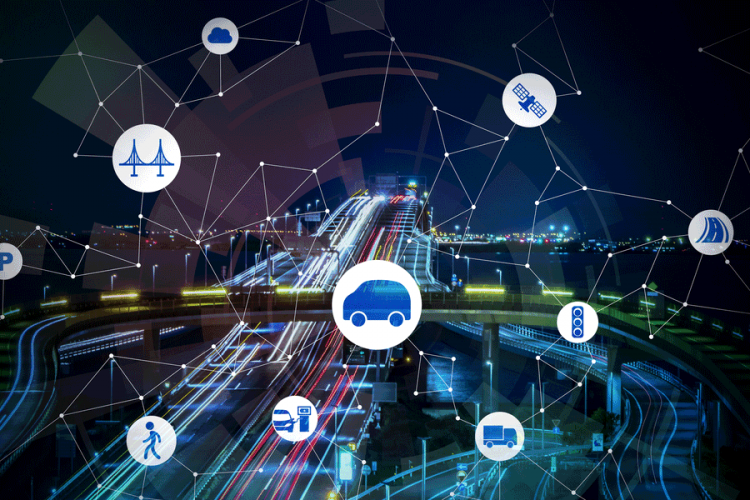Public sector automation: who is driving the transport revolution?
- Like
- Digg
- Del
- Tumblr
- VKontakte
- Buffer
- Love This
- Odnoklassniki
- Meneame
- Blogger
- Amazon
- Yahoo Mail
- Gmail
- AOL
- Newsvine
- HackerNews
- Evernote
- MySpace
- Mail.ru
- Viadeo
- Line
- Comments
- Yummly
- SMS
- Viber
- Telegram
- Subscribe
- Skype
- Facebook Messenger
- Kakao
- LiveJournal
- Yammer
- Edgar
- Fintel
- Mix
- Instapaper
- Copy Link
Posted: 1 June 2017 | Alan Stevens (TRL Chief Scientist) | 1 comment
Connected and autonomous vehicle technology is set to take another leap forward in the UK, following a series of recent government funding announcements. The experts at TRL, the global centre for innovation in transport and mobility, are involved in many project consortia. In this article for Intelligent Transport, TRL Chief Scientist, Alan Stevens, outlines three key areas for successful automation in public transport.


In recent years, the development of connected and autonomous vehicle technology has been driven forward at pace. Few mainstream vehicles now make it to market without some form of driving aid – whether that is adaptive cruise control, blind spot monitoring or lane-keep assistance. However, while transport technology has come along leaps and bounds, the next few decades are likely to see a fundamental transformation in the way in which we travel from A-to-B.
Although private transport modes have taken many of the headlines, it is in the public and shared transport sector that we are now seeing some significant interventions. There is a real incentive for local authorities to create a transport environment which lowers emissions, is cost-effective and ensures consumers can complete their necessary business and leisure journeys. With that in mind, there are three key areas on which to focus: the vehicles themselves, management of the fleet of vehicles and integration into the network.
Vehicle evolution
There is already significant diversity in the design of connected and autonomous vehicles in the marketplace and the range is only set to increase as we learn more about what works and what doesn’t. Whether travelling solo or as a group, for short hops or long distances, through urban or rural environments, there will be a lot of requirements for future transport.
However, it isn’t just a case of whether public sector bodies support pods, tram-like carriages or standard cars; there is also a need to consider accessibility. For example, how will users access the vehicles? Will they need contactless keys, apps, etc? Will they need to set their destination in advance or when they climb on board? Will they face forwards or backwards? Are windows required? How easy will it be to make changes to the journey when there is no driver or conductor on board?
Management of vehicle fleets
Many vehicles operate as part of a fleet and the most common of these are buses. With fixed and repetitive journeys, it is much easier to plan and manage the vehicles on those routes. The computer systems on board can focus on learning one pathway and manage timing around a specific journey. However, the challenge comes with unexpected diversions and adapting to unplanned stops. The interface between the traveller and the machine is vital.
It is also essential to consider how to match supply with demand. As per current transport planning, there are peak travelling periods of the day affected by working hours, road conditions and exceptional events. For road authorities looking to integrate connected and autonomous vehicles into an already complex system, it is important to ensure that the right vehicles are on the roads when required and that users can book in advance or access on demand.
Integration into the public transport network
Very rarely will a journey require only one mode of transport. Often, passengers will combine walking or cycling with a bus or train and perhaps even a taxi. There are also plenty of park-and-ride schemes and, with emissions management becoming ever-more important for cities, the restrictions on what vehicles can enter are likely to become more significant. Public sector planners will need to ensure that the vehicles operating within their influence – whether public or private transport – are able to ‘talk’ to the wider transport network and meet future environmental needs.
For a lengthy period of time, we will have a mixture of semi- and fully-automated vehicles on the roads and it is essential that research is done on how they will interact. There are also business cases to explore; for example, the competition between private taxi licences and providing permission for ride-sharing schemes – autonomous or not. Local authorities will need to consider whether bus companies can share routes when the technology they are using is different or whether networks need to be divided.
The transport revolution?
We continue to see major industry shift towards automation, connectivity, shared mobility and the electrification of vehicles. Such market disruption is transforming the way people will travel, especially in cities, and it is essential that the public sector is at the forefront of this fast-changing market.
Related topics
Connected & Autonomous Vehicles, Fleet Management & Maintenance, Multimodality, Ticketing & Payments
Related organisations
TRL









Also worthy of mention is the quality of the ride. Just this past month I rode a bus in the UK where the acceleration and braking were sickening. The coming buses will maximise acceleration whilst limiting jerk rate (rate of change of acceleration) driver or not. Being Canadian I also appreciate that independent wheel control allows significant improvement in traction, ABS, and anti-skid. The air conditioning will soon work at a constant output (electric motors vs engine speed) so when doors are open or travelling at a crawl we keep cool. The next generation of vehicles; once route adjustments are made, will undoubtedly get us to our destinations faster thanks to instant torque, advanced electronics etc. The ride is about to get safer and much much better overall.